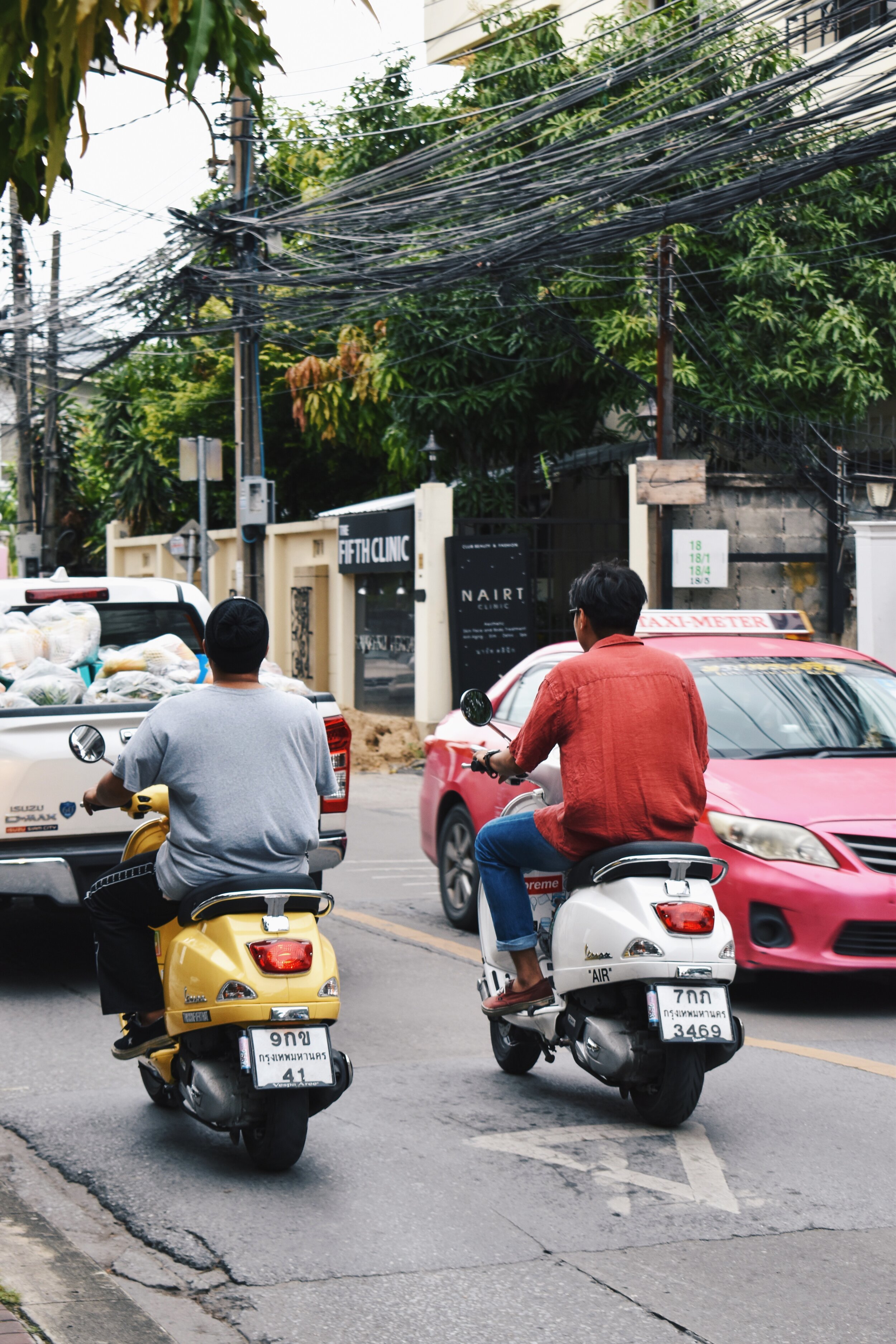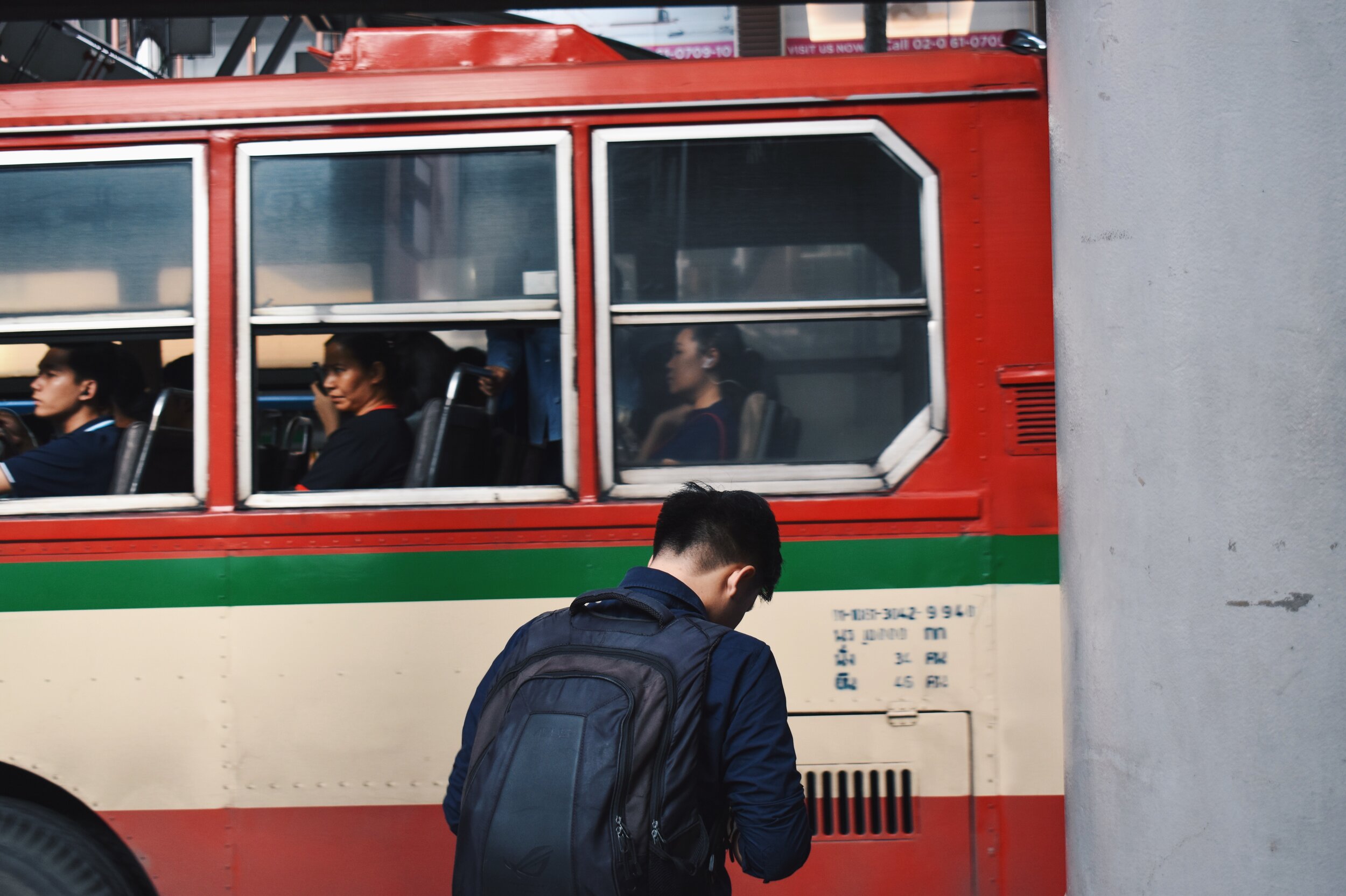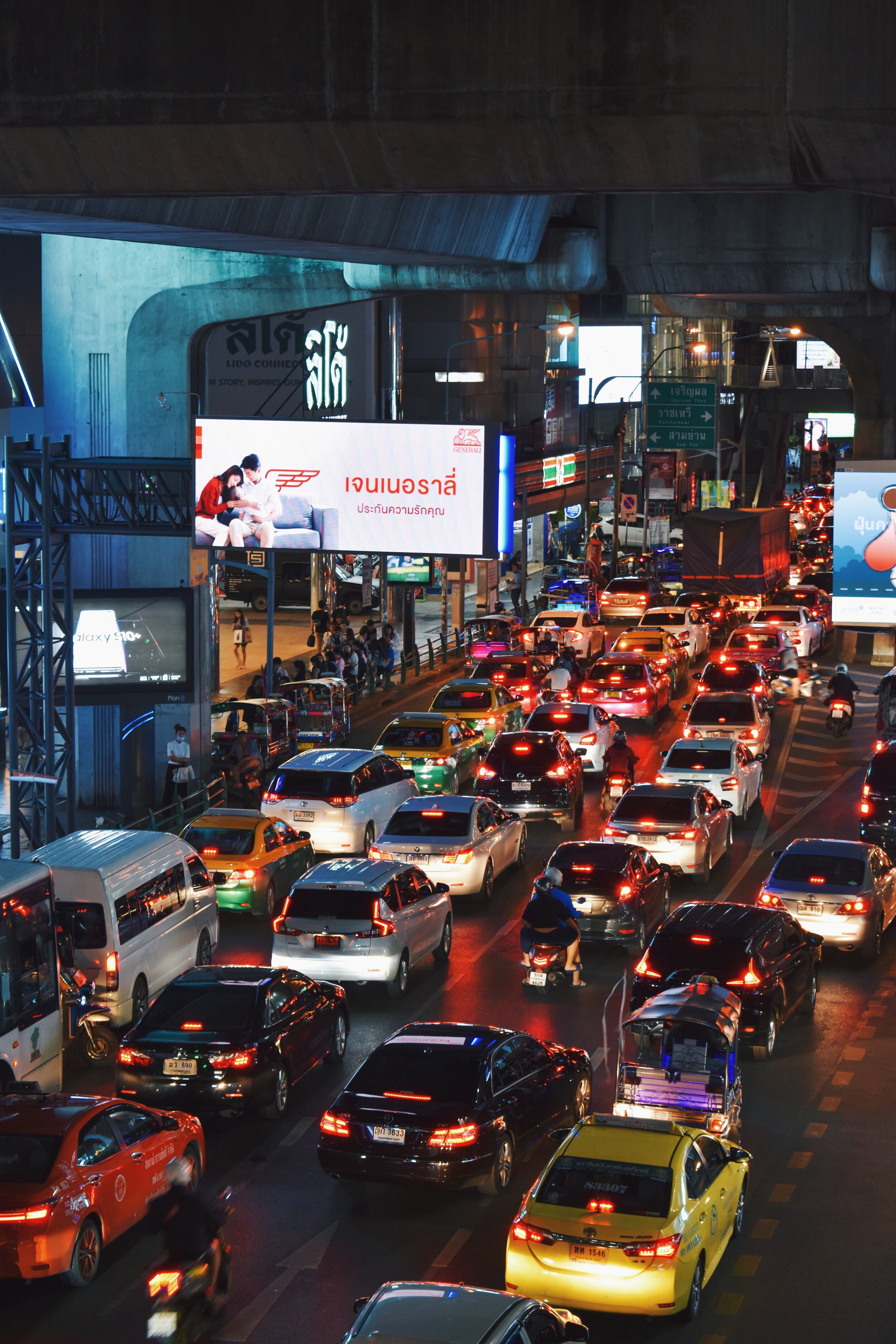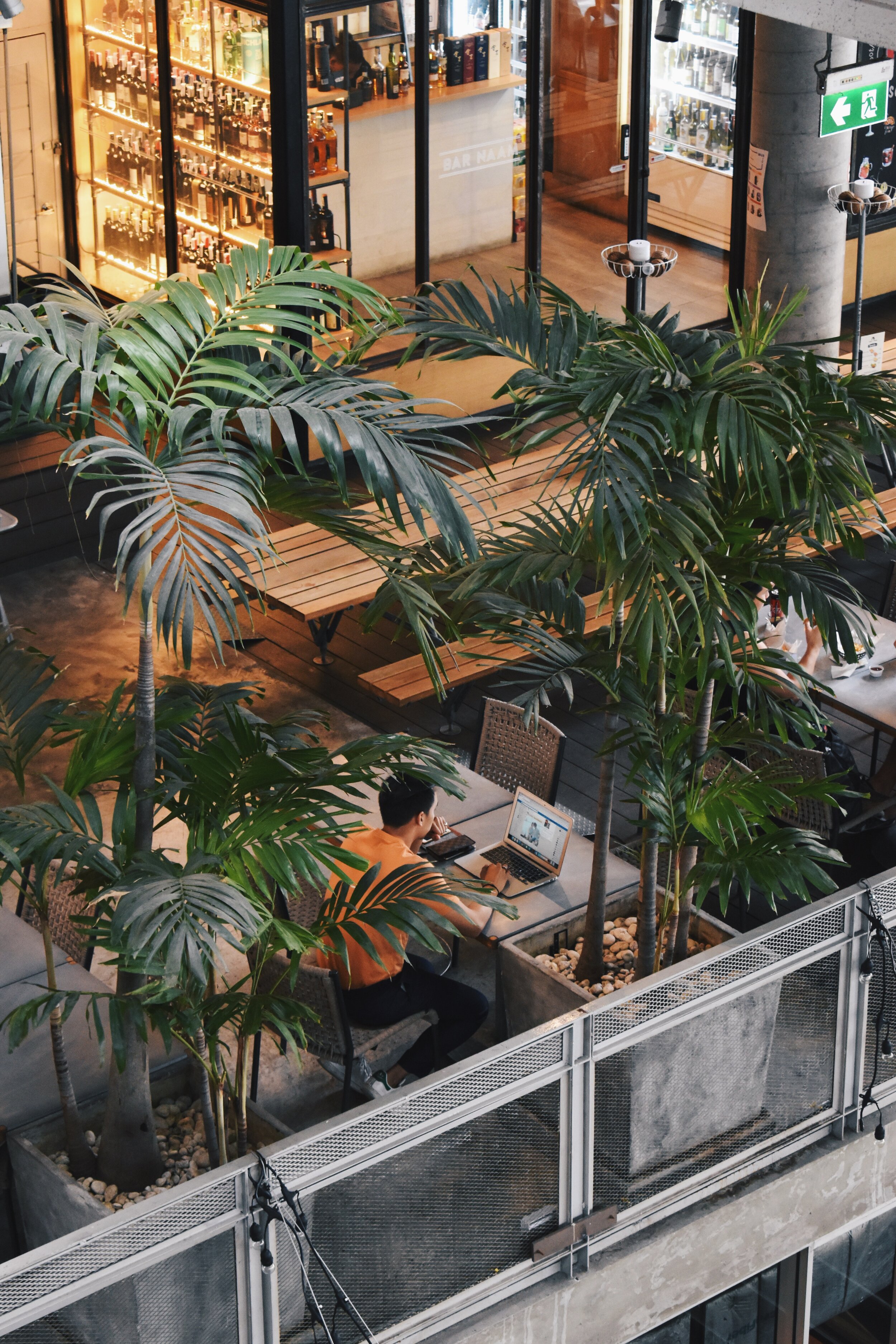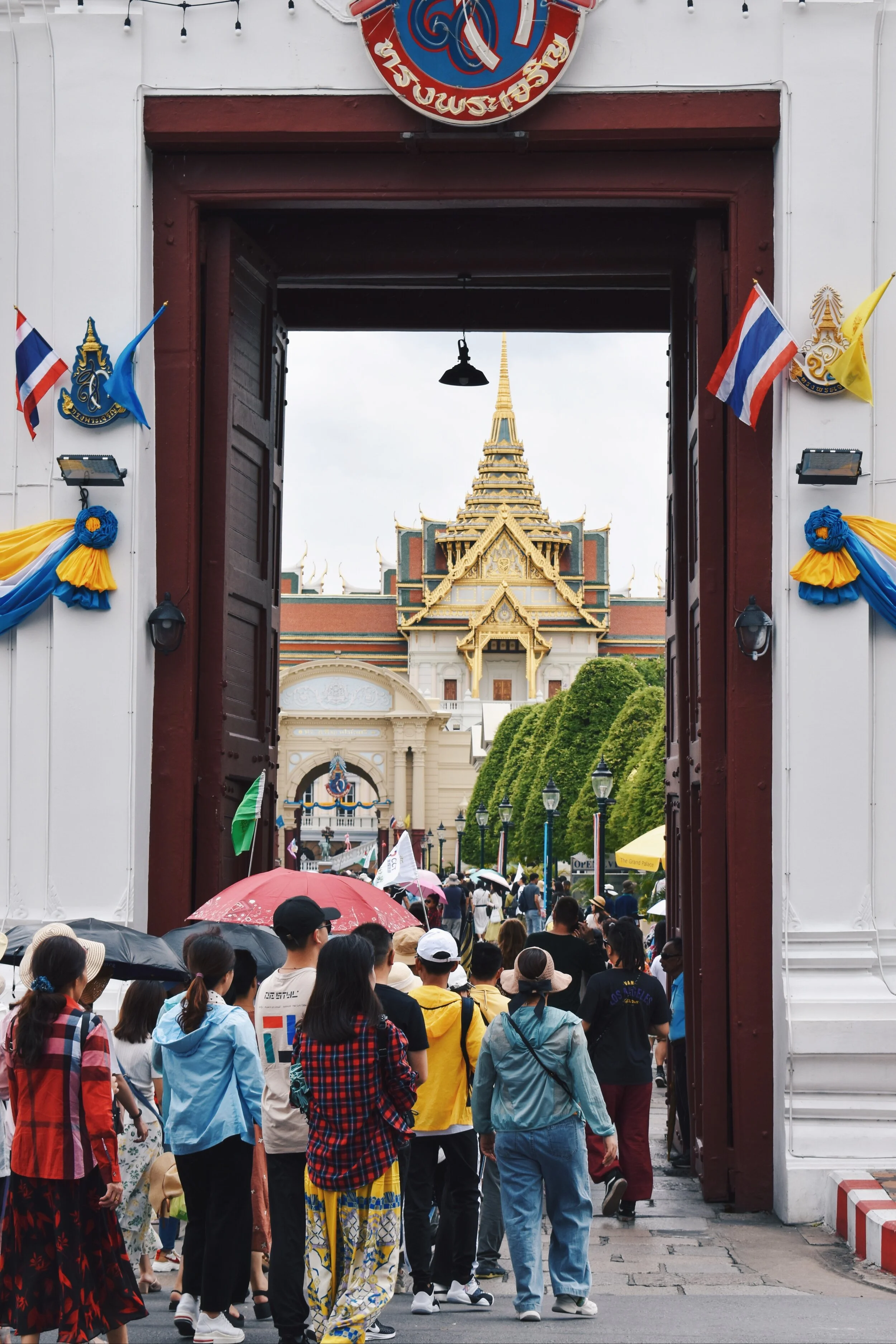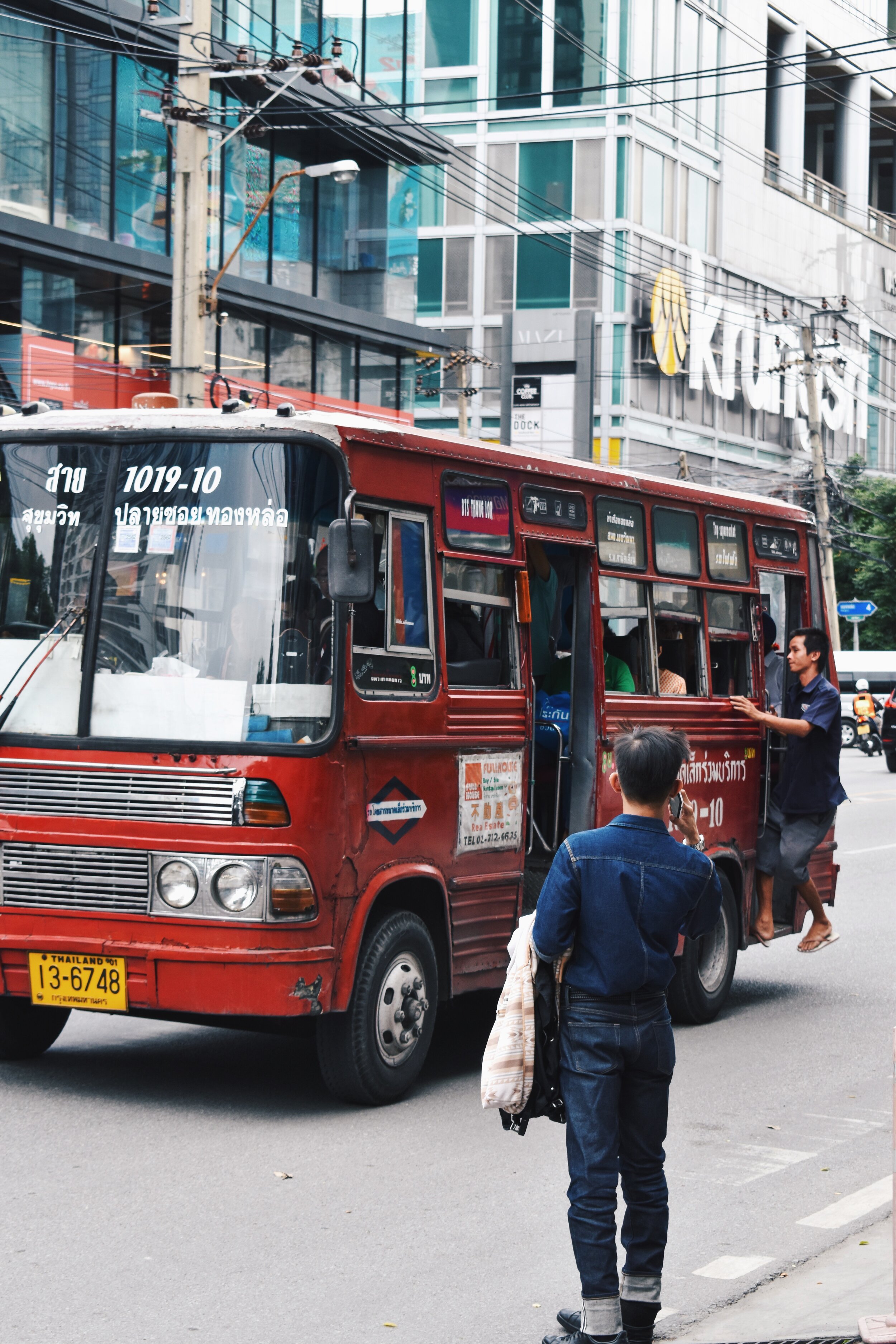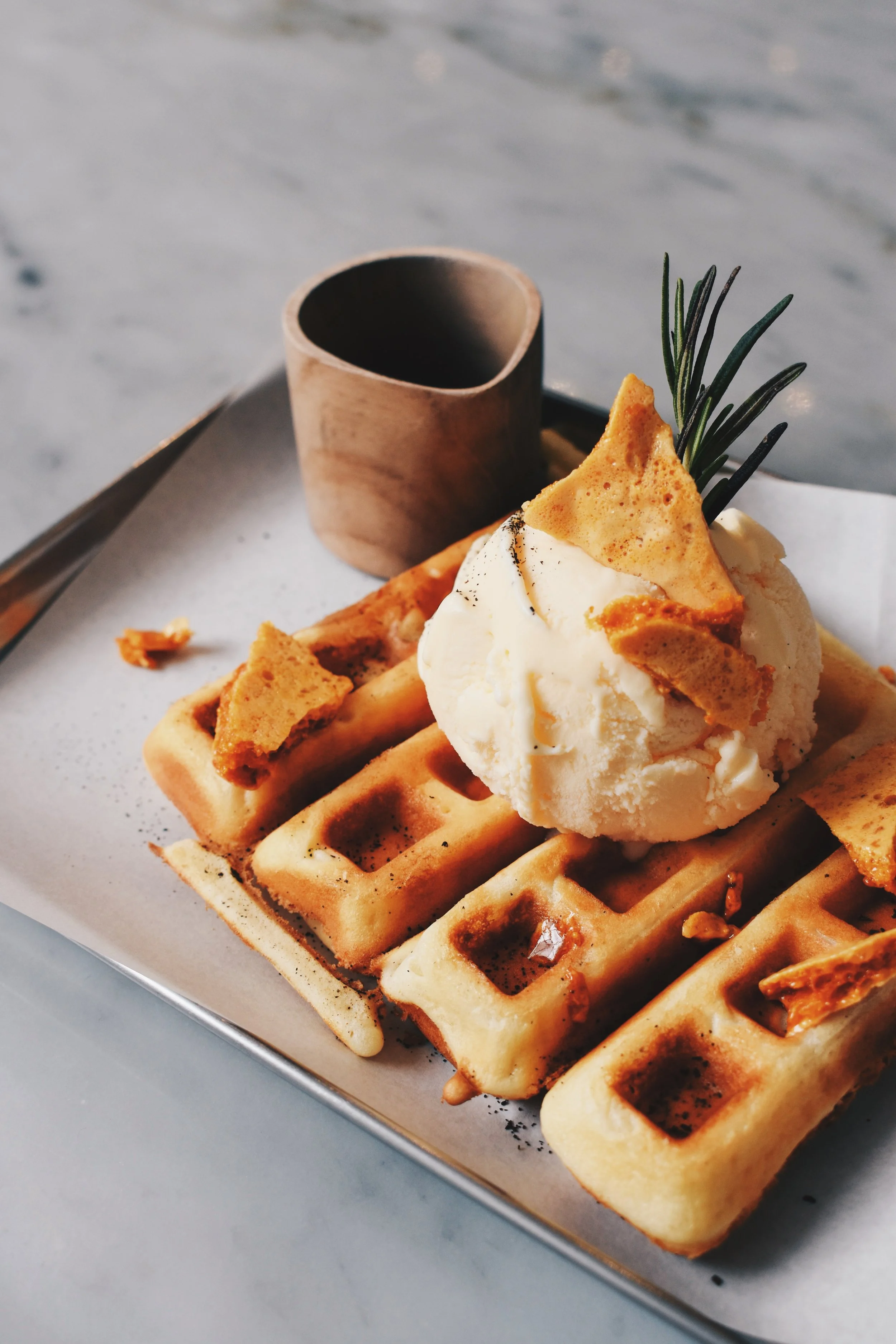The Ultimate Guide to Bangkok's Public Transport System: How to Get Around

For the unfamiliar, navigating through Thailand’s capital city of Bangkok can be overwhelming and confusing. Think two metro / subway systems that aren’t integrated (not yet anyway), therefore with separate ticketing schemes and fares, river cruises and taxis of different routes and flags, tuk-tuks, taxis, Grab Cars, buses etc. It’s easy to see how one might need a travel guide to make sense of it all— and that’s before you even consider an itinerary!
Yet, the reason why the public transportation system is so vital to getting around is that Bangkok’s traffic is often stuck in a gridlock, and it does take ages to get around downtown Bangkok in a car.
Read: What to See & Do in Bangkok— A Complete Itinerary
Read: A Guide to Bangkok’s Best Cafes
If you need a guide to make sense of Bangkok’s public transport, this is the guide for you.
Getting Around by Rail
BTS Skytrain
One of the most efficient ways to cross the city, if not the most— the Skytrain is a perennial favourite amongst local Bangkokians and travellers, alongside the MRT.
The tracks rise above the city and you can get some stunning overhead city views from the windows of the BTS.
That is, if you can find any space to move around in the cabin as it does get pretty crowded, especially in the mornings and evenings near the more central areas.
Operating from 6:30 in the morning to 12 midnight, there are 2 lines that adequately cover the city which intersect at Siam Station.
At several other stations, you’ll be able to walk a short distance to transfer to an MRT station.
A single ticket will usually suffice, unless you plan on commuting a lot using the BTS, where you can either get all-day passes or a stored value card not unlike the Ez-Link Card in Singapore or Oyster Card in London.
The Airport Rail Link connects Suvarnabhumi Airport with downtown Bangkok.
MRT
Unlike the BTS, the MRT system takes you underground.
You can switch between the MRT and BTS lines at Sukhumvit, Chatuchak Park, and Silom stations, but of course, bear in mind that these stations will get very very busy during rush hour, and it’s possible you might not be able to get on the next train immediately.
The MRT line also has 2 lines, and you can get the day pass or single tickets.
Note that as mentioned, the BTS and MRT are run by 2 different corporations, and therefore day passes or single tickets are not interchangeable. There have been talks about integrating the two systems for a while now, but until then, it is what it is.
Slow Trains
If you’re staying in downtown Bangkok, this will be of no use to you.
However, if you’re hopping on trains for longer journeys to other parts of Thailand and even neighbouring Laos, this will be invaluable.
Think popular destinations like Ayutthaya, Chiang Mai, Hua Hin, Surat Thani (in Southern Thailand and yes, the gateway to the Full Moon Beach Parties), and Vientiane (Laos).
You’ll get to these places via the Hua Lamphong station.
These destinations being incredibly popular means you’ll have to secure tickets about 24 hours in advance from the station.
If you’re heading north to Kanchanaburi, the station you’ll need is Thonburi.
Getting Around by Boat
Public River Taxis
When you exit to the pier via the Saphan Taksin BTS station to traverse the Chao Phraya River, you’ll immediately be flooded by touts and offers to hop on to many different kinds of boats offering different itineraries, all-inclusive packages, and a laundry list of sights with what you can see on their river tours.
If you’re looking for the most economical option though, head left to the public river taxis, denoted by their coloured flags which represent different routes.
Ticket fares here are bought on site, and a ticket on the orange flag boat from Saphan Taksin to the Grand Palace stop for example, costs THB15 / S$0.70 / US$0.50.
The coloured flags are as follows:
No Flag (local line) - Runs only on weekdays, and stops at every pier from Wat Rajsingkorn (Pier S1) in the south to Nonthaburi (Pier N30) in the north. THB10 - 20.
Blue Flag Line (tourist boat) - Runs daily and stops where you please. English speaking staff will call out every stop and ask if anyone would like to get off, and operates from 9am to 7pm. THB40 per trip and THB100 or more for a day pass.
Orange Flag - Runs daily and stops only at the main piers, from Wat Rajsinkorn (Pier S3) and Nonthaburi (Pier N30). About THB15 per journey.
Yellow Flag - Runs only on weekdays during the morning and evening rush hour. Larger, posher boats that are also used by the Blue Flag Tourist Boat to take on more passengers and travels faster. THB20 - 29.
Green Flag - Runs only on weekdays during the morning and evening rush hour. Stops at 13 stops out of the 33 piers, designed for commuters travelling into downtown Bangkok from the northern outskirts. THB13 - 32.
Long-Tail Boats
For visitors, long-tail boats will be more of an experience than one you take to rub shoulders with Bangkokians getting to and from work and school. They are able to travel from the main river artery to the khlongs or canals.
You can hire one for a private tour from major piers like the Sathorn Central Pier, The Grand Palace, or River City Shopping Complex Tour.
Be advised that this is a chance for tour operators to inflate prices as there is no set price, so proceed with caution, or with the help of locals.
River Crossing Ferry
These boats do what they say on the tin, which is to transport passengers from one river bank to the other.
This is of major tourist interest due to the fact Wat Arun and Wat Pho / The Grand Palace are on opposite banks of the river.
A journey costs around THB3.
Hotel Shuttle Boats
If you’re staying at any of the luxury hotels situated along the River, all of the top 5 star hotels have shuttle boat services from Saphan Taksin to their respective hotels.
Even if you’re not a hotel guest, you can hop on these boats for free.
Of course, you won’t be able to get to The Grand Palace on these boats.
Getting Around by Road
Taxi
Due to the many stories of travellers getting ripped off, ensure the driver turns the meter on and the fare starts from THB35.
Rain will bring about inflated prices or a refusal to use the meter, and you’ll have to ensure you follow the route on Google Maps to ensure the driver doesn’t take you on a joyride.
You’ll have to cover any toll fees yourself, though drivers will usually ask beforehand if they need to possibly go on a toll road, which is usually on a highway.
Grab
Just like in any other part of the world, ride hailing services and private car hires have caught on in a big way.
Grab is a popular one for Southeast Asia and you can use it in many other parts of the region.
You’ll also get to see the cost of the fare before choosing to hire one.
Tuk-tuk
A tourist trap through and through, drivers often charge inflated prices for short trips.
It’s also a relatively unsafe way to travel, and an unhealthy one too due to the amount of fumes inhaled.
Motorcycle Taxis
Largely used by local Bangkokians, a trip can cost around THB20 - 30 for a short ride downtown.
Also considered dangerous and unhealthy, this isn’t the most recommended way to get around.
Overall
And there you have it, the myriad of options to get around can be confusing but once you get the hang of things, it’s relatively easy to get around.
A common rookie mistake to make when transiting between the BTS and MRT lines is to take to the streets, but often there’s adequate infrastructure above the streets that are sheltered and busy, which are a convenient way to transit between the two systems.
Follow the crowd or ask a local if you’re unsure.
For most, the BTS and MRT will suffice, but there will be a decent amount of walking still once you leave the stations.
However, coverage is improving, and extensions to lines do come up from time to time, and I found Google Maps wasn’t always the most up to date.
For example, to get to Blue Whale Cafe about 15 minutes away from The Grand Palace, it seemed there weren’t many public transportation options so I hopped on the river taxi and walked over from the pier, only for my Bangkokian friends to tell me I could’ve gotten off at the Sanam Chai MRT station which had opened not too long ago.
So definitely ask a local to help you out to make sense of it all, and adequately prepare small change if you’re looking to get tickets for both the BTS and MRT.

